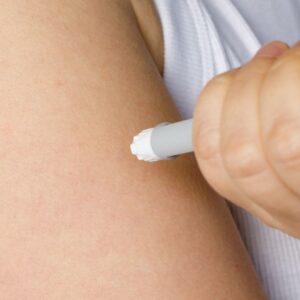Thinning hair and bald patches can be distressing, especially when your appearance directly affects your confidence. In today’s world, where first impressions matter more than ever, restoring your hair’s natural fullness isn’t just about looks—it’s about reclaiming your self-assurance. One of the most effective and permanent solutions available is a Hair Transplant in Dubai. When done safely, this procedure can offer long-lasting results that not only enhance your appearance but also boost your overall quality of life.
Why Safe Methods Matter
Choosing a safe method is the foundation of a successful hair restoration journey. Safe procedures reduce risks, ensure better healing, and provide more natural-looking outcomes. Hair follicles are delicate, and any aggressive or outdated approach can lead to unwanted side effects or poor growth. That’s why learning about the safest and most effective techniques is essential for anyone considering this treatment.
Understanding How Hair Transplants Work
A Hair Transplant involves relocating healthy hair follicles from areas of your scalp with dense growth (typically the back and sides) to areas experiencing thinning or baldness. Over time, these transplanted hairs grow naturally and blend seamlessly with the rest of your hair. The goal is to maintain a natural appearance while enhancing volume where it’s needed most.
Safe and Proven Hair Transplant Techniques
Several modern techniques ensure both safety and effectiveness. Here are the most widely used and trusted options:
Follicular Unit Extraction (FUE)
FUE is a minimally invasive technique that involves extracting individual hair follicles one at a time using specialized tools. These follicles are then implanted into the thinning or bald areas. Since there are no stitches or linear scars involved, recovery is faster and more comfortable. FUE is especially suitable for those who want a more discreet transformation.
Follicular Unit Transplantation (FUT)
FUT, also known as the strip method, involves removing a small strip of scalp from the donor area and dissecting it into individual follicular units. While it may require a slightly longer healing period, it can be ideal for people who need a significant number of grafts in one session. It’s a proven method with high success rates when performed under controlled and sterile conditions.
Direct Hair Implantation (DHI)
This technique is a refined version of FUE. In DHI, each follicle is implanted directly using a special implanter pen without pre-making holes in the scalp. This provides precision in the angle, depth, and direction of each hair, resulting in a more natural look. DHI offers minimal downtime and can be particularly beneficial for creating density in focused areas like the hairline or crown.
Benefits of Choosing Safe Hair Transplant Methods
Opting for a safe and well-researched method of Hair Transplant provides multiple advantages:
-
Natural-Looking Results: The placement and orientation of transplanted follicles mimic the natural growth pattern of your original hair.
-
Minimized Scarring: Especially with FUE and DHI techniques, scarring is barely visible, even with short hairstyles.
-
Permanent Growth: Once the transplanted hair takes root, it behaves like natural hair and continues to grow for a lifetime.
-
Confidence Boost: Regaining volume where it matters most can have a profound impact on self-esteem and overall mood.
Who Makes a Good Candidate?
Ideal candidates for hair restoration are individuals with stable hair on the back or sides of the scalp, which can be used as donor areas. Other factors such as age, hair texture, and extent of hair loss also play a role. A comprehensive assessment can help determine which technique suits your needs best.
Pre-Procedure Considerations
Before undergoing any hair restoration method, certain steps are necessary to ensure safety and effectiveness:
-
Scalp Analysis: A detailed examination of your scalp to determine follicle density and potential.
-
Medical History Review: Understanding your overall health to avoid complications.
-
Realistic Expectations: Knowing what the procedure can and cannot achieve helps you prepare mentally and emotionally.
Post-Procedure Guidelines
Following your hair restoration session, adhering to aftercare guidelines is crucial for optimal healing and growth:
-
Gentle Washing: Avoid harsh shampoos or rubbing the scalp vigorously.
-
Limited Sun Exposure: Direct sunlight should be minimized during the healing period.
-
Avoid Physical Strain: Heavy workouts and intense activities should be paused temporarily.
-
Patience is Key: It can take several months for new hairs to fully emerge and grow thick.
Debunking Common Myths
There are plenty of misconceptions about hair restoration that might stop people from exploring it. Let’s address a few:
-
Myth: Transplanted hair falls out permanently.
Truth: While initial shedding is normal, the roots remain intact, and new hair grows from them. -
Myth: It looks unnatural or pluggy.
Truth: Modern techniques like FUE and DHI ensure a seamless, natural appearance. -
Myth: It’s only for older people.
Truth: Many younger individuals are also opting for hair restoration to manage early-stage thinning.
Final Thoughts
A safe Hair Transplant Dubai doesn’t just restore hair—it restores confidence, youthfulness, and peace of mind. By understanding your options and selecting techniques backed by science and results, you can enjoy fuller, thicker hair without compromising your health or comfort. Hair loss may be a natural process, but living with it doesn’t have to be your only choice. Lasting volume is within reach—with the right approach and informed decisions. When it comes to permanent hair restoration, knowledge is just as powerful as the procedure itself. Make sure your journey toward a fuller head of hair begins with the safest and most reliable techniques available today.







